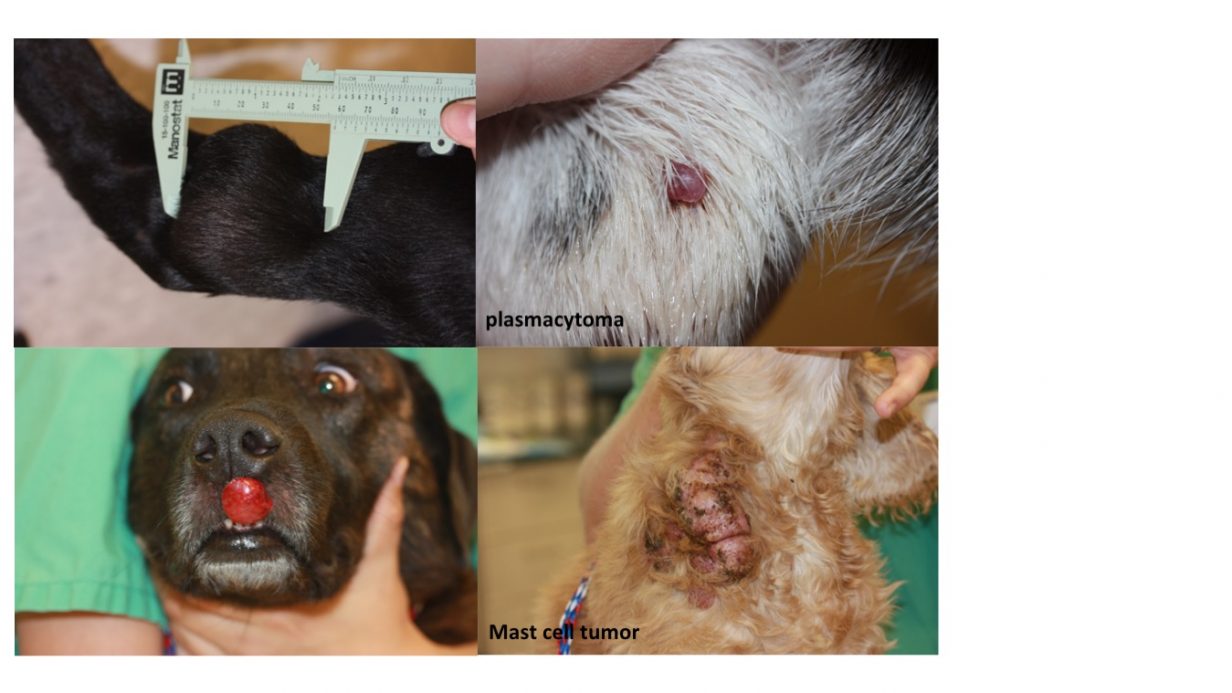
COMMON SIGNS OF CANCER: A Dozen Things to Note
Every pet owner fears hearing that their beloved pet has cancer. Unfortunately, cancer has become relatively common in pets- 50% of dogs and cats over the age of 8 will develop cancer. Why has cancer become so common in animals? For one, I believe it is because we are taking better care of our pets- they are living longer and happier lives so they live long enough now to develop cancer. And secondly, I believe it is because we use more advanced diagnostic tests now than we did 15-20 years ago- ultrasound, CT scans, and MRI are all common imaging modalities used today which were not routinely used 20 years ago in animals. And, we are more likely to pursue running bloodwork and advanced imaging now than we were two decades ago. These tools enable us to identify cancer and other diseases to help treat our pets when they are feeling under the weather.
The most important tool to help us fight cancer is early detection. It is very important to be vigilant and not ignore changes in your pet’s behavior or health. When caught early, many forms of cancer can be treated successfully with a good quality of life. So, what are the common warning signs that we need to investigate?
- Lumps and Bumps: Check your dog over regularly for new lumps or growth in lumps that have been previously evaluated.
- Don’t panic if you find a lump. Not all lumps are bad. There are many benign lumps. However, unlike humans who don’t have hair, it is difficult to diagnose the type of masses in dogs without sampling.Most commonly, we sample with a fine needle aspirate- a small needle sample of the lump that is examined under a microscope.
- What types of masses are urgent? Irregular, painful, itchy or ulcerated/bleeding masses are all masses that are concerning. In cats, masses that appear in areas where an injection has been given are also concerning no matter the size, shape, or appearance.
- Have these lumps aspirated or biopsied under a microscope, not just “looked” at or “palpated.”
- Lameness or Limping: Pets can become lame for many reasons. Something as simple as a cut on their pad or a minor sprain can cause a lameness but in older dogs, limping can also be a sign of bone cancer.
- Bone cancers are acutely painful andyour pet may show signs of discomfort when you touch the area. You may also notice a swelling and the area may feel hot to the touch.
- Signs associated with bone cancer also include restlessness, particularly at night, a lameness that does not improve over time, and other changes in habits, such as not wanting to play as long, or changes in appetite.
- Weight loss or changes in appetite: While there are multiple reasons that a pet may lose weight or have a change in its appetite (such as kidney disease or diet changes), any weight loss that is not intentional should trigger a ride to the vet’s office for a checkup.
- Weight loss with cancer is often gradual and may not be noted immediately.
- Cats tend to from less and a dull haircoat or matted hair are often noted.
- Intermittent vomiting or diarrhea may also be noted as well.
- Malodorous breath or malodorous body odor: This can be caused by poor dental health but tumors in the mouth can also cause a bad smell from the mouth. Additionally, foul smells from other areas can also be a sign of an infected tumor and should trigger a trip to the vet.
- Difficulty breathing or coughing: Coughing can result from many things- heart disease, bronchitis, cancer but the bottom line is that it does warrant a checkup from the vet. Difficulty breathing is more urgent and should be considered an emergency.
- Changes in behavior, irritability, seizures, changes in character: It is important to pay attention to changes in behavior, activity, or character. These can be signs of biochemical changes, pressure from tumors, and brain tumors can often induce changes in behavior or cause seizures. Changes in balance or trouble walking a straight line should be investigates.
- Changes in body shape: A swollen belly or a leg that is larger than the other can be indications that something is wrong. These should be investigated.
- Straining to urinate or defecate: Straining to urinate or defecate can indicate a tumor compressing the urinary bladder or colon. They can also be a sign of other conditions, such as obstruction from stones in the urinary tract. These symptoms should always be investigated.
- Unusual discharge or a nosebleed: Unusual discharge from the nose, rectum, or other orifice (such as the vulva) and nosebleeds can be a symptom that something is wrong and should be investigated.
- Increased drinking and urination: This can be a symptom of high calcium levels, which can be caused by several tumor types. It can also be a sign of endocrine diseases such as hyperadrenocorticism (Cushing’s syndrome), so it’s not always a sign of cancer, but it does indicate that something may be wrong and warrants investigation.
- Lethargy: If your pet is normally active and suddenly becomes lethargic and tired, or tires easily on its walks, this can be a sign of anemia or underlying illness.
- Trouble eating: This can be a sign of a tumor in the mouth or throat. A good thorough oral exam can often reveal these. Some pets will be reluctant to allow a good oral exam if their mouth is painful and a mild sedative or pain medications can assist in their comfort to allow a good oral exam.
The best way to help ensure successful cancer treatment is early detection. If you notice unusual changes, take your dog to your vet for a checkup and be sure to describe the things you are seeing that have changed. If you are unsure of a diagnosis, or not confident that your pet’s condition was thoroughly investigated, seek a second opinion. This will give you a better idea about your options and will hopefully give you more peace of mind that your vet is making the best recommendations for treatment.

